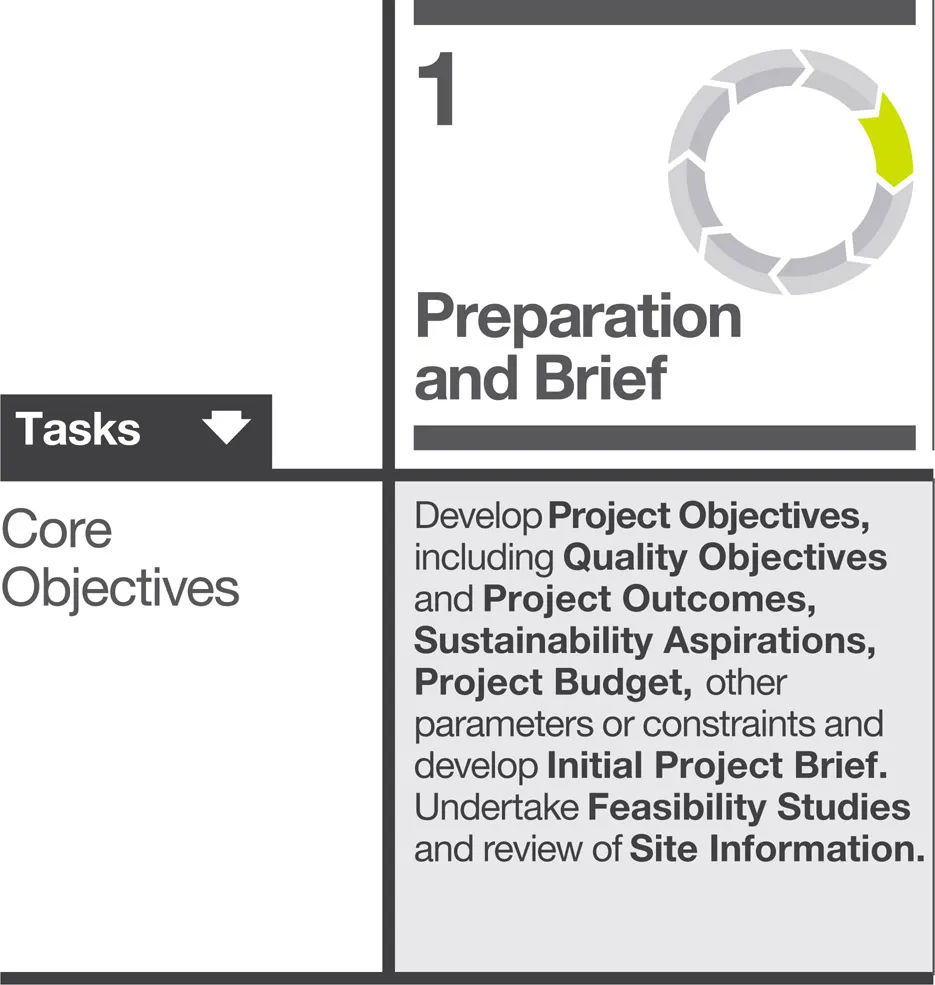
- 256 pages
- English
- ePUB (mobile friendly)
- Available on iOS & Android
About This Book
Sustainability is part of a brand new series providing must-read practical guidance to running efficient and successful projects using the new RIBA Plan of Work 2013. Each guide takes a core project task – in this case those associated with achieving sustainable design and construction - and explains the essential activities required at each stage.
Concise and easy to use with a consistent format these guides provide the ultimate quick reference support at your desk or on-site. An authoritative 'how to' full of pragmatic advice, examples and in-text features such as 'hints and tips' that illuminate best practice and clever solutions.
Designed to be used on all projects – large and small – and across all types of procurement, they are task rather than role-oriented acknowledging that a variety of people take on these responsibilities. They are also invaluable for architectural students at Part 3 who are getting to grips with the realities of practice.
Frequently asked questions
Information
Stage 1
Preparation and Brief

Chapter overview
Introduction
What are the Core Objectives of this stage?

Considering Sustainability Aspirations in the Project Outcomes
- desire for good daylighting can reduce running costs in use if lighting controls are properly thought through
- desire for natural ventilation can reduce mechanical services and save plant room space and capital and running costs.

- the central importance of the site, the site history and biodiversity
- analysis and response to climate, landscape, ecology and infrastructure
- user and community participation to:
- enable opportunities and objections to be identified and dealt with early on
- enhance user and community commitment and sense of ownership
- determine revenue implications
- save time at later stages
- using the building’s form and fabric as the primary means of environmental control
- setting appropriate targets for energy efficiency and water economy
- avoidance of waste in all its forms
- designing for enhanced pedestrian and cycle access, reduced car use and enhanced links to public transport infrastructure and amenities
- specifying benign materials to minimise embodied energy and embodied toxicity
- maximising passive design so that the mechanical systems serve as supplements to natural systems rather than replacements for them
- optimising daylight to enhance functionality without introducing a heating or cooling load
- enhancing user satisfaction and productivity
- affordability, in terms of both initial capital cost and life-cycle costs, taking account of policy trends
- arrangements for building management, including user-friendly controls.
Table of contents
- Cover
- Half Title
- Series Page
- Title
- Copyright
- Contents
- Foreword
- Series editor’s foreword
- Acknowledgements and dedication
- About the authors
- About the series editor
- Introduction
- The RIBA Plan of Work 2013
- Stage 0 Strategic Definition
- Stage 1 Preparation and Brief
- Stage 2 Concept Design
- Stage 3 Developed Design
- Stage 4 Technical Design
- Stage 5 Construction
- Stage 6 Handover and Close Out
- Stage 7 In Use
- Further reading
- Sustainability glossary
- RIBA Plan of Work 2013 glossary
- Index